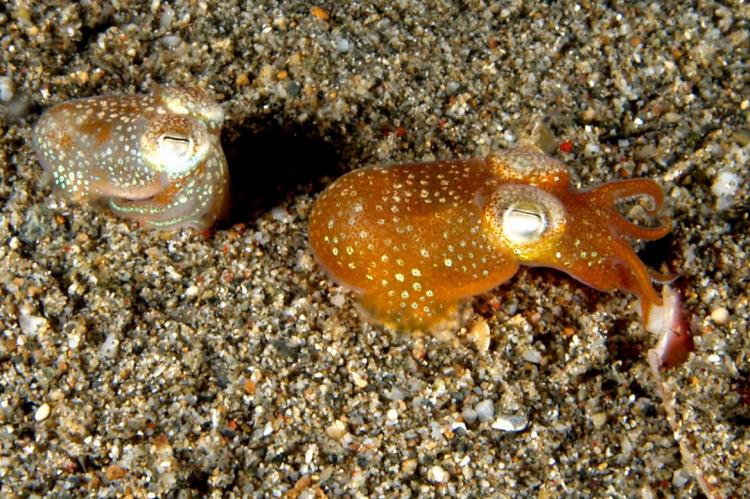Bacteria control daily rhythms in squid
Glowing bacteria inside squids use light and chemical signals to control circadian-like rhythms in the animals.
In addition to acting as a built-in lamp and using the bacteria at night as an antipredatory camouflage while it ventures out to hunt, the bacteria also control when the squid expresses a gene that synchronizes, circadian rhythms in the squid.
The Hawaiian bobtail squid, Euprymna scolopes, houses a colony of Vibrio fischeri bacteria in its light organ.
Like all animals, squids make proteins that set their inner clock to environmental light. E. scolopes produces two of these "light entrainment" proteins and one is regulated in the squid's head, just like every other animal.
The researchers, led by Margaret McFall-Ngai of the University of Wisconsin - Madison, then noticed that escry1, the gene that encodes the other protein, is most highly expressed in the light organ, where the squid houses its glowing bacterial symbionts.
Who is in charge?
But is it the bacterial luminescence that synchronizes the cycling, or is it the bacteria themselves? It's both, says McFall-Ngai.
The bacteria are necessary for cycling, she says, since squid grown without their bacterial symbionts do not cycle their expression of escry1, and mimicking the bacterial light with a blue light did not induce the cycling.
How does bacteria signal to the squid?
Microbe-associated molecular patterns (MAMPs) are molecules that signal the presence of microbes to other creatures. MAMPs plus light turned cycling on.
In squid grown without symbionts, light, combined with MAMPs, could induce some degree of cycling. The squid did not respond fully, though, maybe because the MAMPs were only injected into their seawater habitat, not presented directly to the light organ.
To our knowledge, this is the first report of bacteria entraining the daily rhythms of host tissues.
—Margaret McFall-Ngai of the University of Wisconsin - Madison


